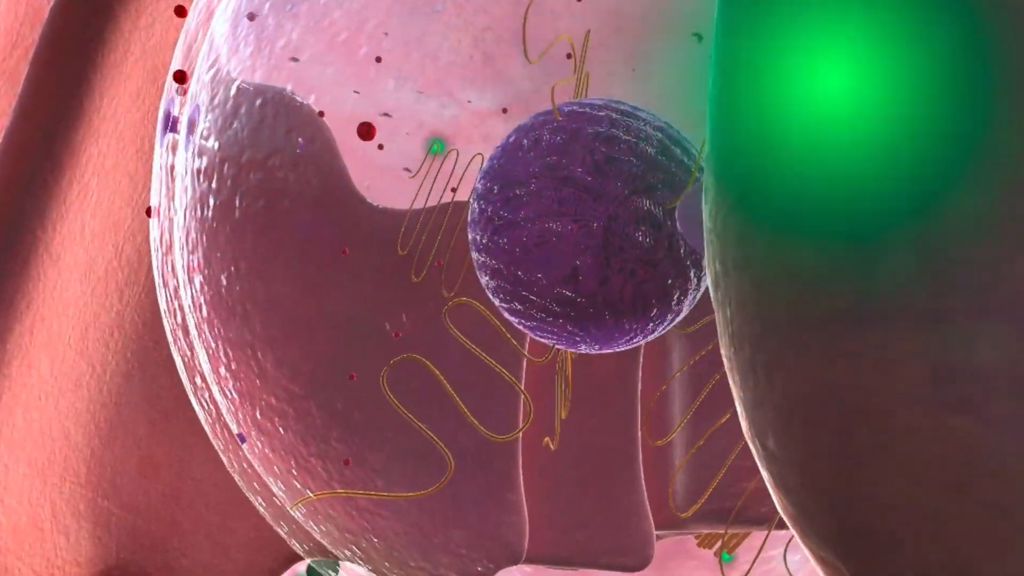

At XReady Lab, we’re revolutionizing biology education with virtual reality by creating immersive VR cell experiences. Our VR animal cell module takes students on a comprehensive journey inside the cell, offering an interactive experience that makes learning about cellular structures engaging and unforgettable. Designed to align with a variety of global standards, this simulation is a powerful tool for educators across the globe.
Understanding cellular structures through traditional teaching methods—such as textbooks or basic 2D diagrams—often limits students’ engagement and comprehension. Our VR animal cell experience enables students to step inside the cell and witness its organelles in 3D, gaining an unparalleled perspective on cellular function. In our animal cell VR tour, students can view cell structures from every angle, hold particles in their virtual hands, and even learn about what happens when specific organelles malfunction.
For young learners, the idea of a cell can be abstract. By engaging in VR inside the cell, students can vividly explore structures like the nucleus, mitochondria, and Golgi apparatus. They experience a VR cell structure that goes beyond flat images, fostering a deeper understanding of how each organelle contributes to cellular health.
Our VR animal cell simulation isn’t just an engaging experience—it’s aligned with respected international curricula, making it adaptable and relevant worldwide. Students exploring our VR animal cell can align their learning with programs such as:
By covering these standards, our VR cell simulations ensure that students and teachers can integrate our tools directly into their lesson plans, adding depth and excitement to the educational process.
With our VR animal cell tour, students don’t just observe cell structures—they actively participate in cell functions, learning about each part’s role and its impact on the cell’s overall health. This immersive VR cell structure experience enables students to navigate through each organelle as if they were scientists exploring an entirely new world. They learn what makes up an animal cell, discover organelle functions, and understand why the malfunction of a single part can disrupt the entire system.

In this virtual experience, students engage in tasks that bring science to life:
This hands-on journey inside the cell, combined with targeted VR learning solutions, delivers an unforgettable exploration of cellular biology. By incorporating VR in the classroom, teachers can shift from static learning models to dynamic, experiential teaching that resonates with students.
Whether it’s the animal cell Cambridge curriculum or the animal cell IB program, we recognize that biology standards vary across the globe. Our VR platform not only aligns with these programs but also adapts to the specific needs of each curriculum, offering content that is both globally relevant and locally applicable. Through VR in the classroom, students studying under the animal cell National curriculum in England, animal cell Indian curriculum CBSE, or animal cell National curriculum of the Netherlands can all access the same interactive, high-quality biology lessons.
This multi-curriculum compatibility ensures that every student, regardless of location, has access to the same educational benefits, while teachers are empowered to meet national standards.
Why is a VR animal cell simulation so impactful for biology education? The answer lies in its ability to simplify complex scientific concepts, making learning accessible and engaging. Our animal cell VR tour enables students to explore cellular structures in a way that’s not only fun but also scientifically enriching. Here’s how our VR inside the cell simulation enhances learning:
Our VR biology simulations go beyond typical science lessons, allowing students to interact with complex biological processes as if they were part of a real lab. For educators interested in bringing this technology to their students, we’re offering a free demo of our plant cell application, which provides a similar immersive experience.
At XReady Lab, we believe that fostering curiosity and understanding in science during school years is vital. By experiencing biology through immersive VR education, today’s students are better prepared to become tomorrow’s scientists, engineers, and healthcare professionals. Engaging young learners with tools like our VR animal cell simulation is more than just about grades—it’s about igniting a lifelong passion for STEM.
Join us in this journey to redefine the learning experience and inspire the next generation.
Frequently Asked
We prodive VR biology, VR physics, and VR chemistry simulations. Please, check our catalog.
Please, fill the form to get demo labs for free.
Please contact our customer support service at support@xreadylab.com or book a call with the team to find out the conditions and book the VR class set up at your school.
Subscription to XReady Lab interactive VR labs. If you are a school, then you are also given access to the VR classroom system. VR class system helps you easily launch VR lessons for a large number of students, follow the experience of each student, as well as customise the content without developers.
We adhere to the world’s generally accepted recommendations and research. Our products are suitable for children from 12 years old.